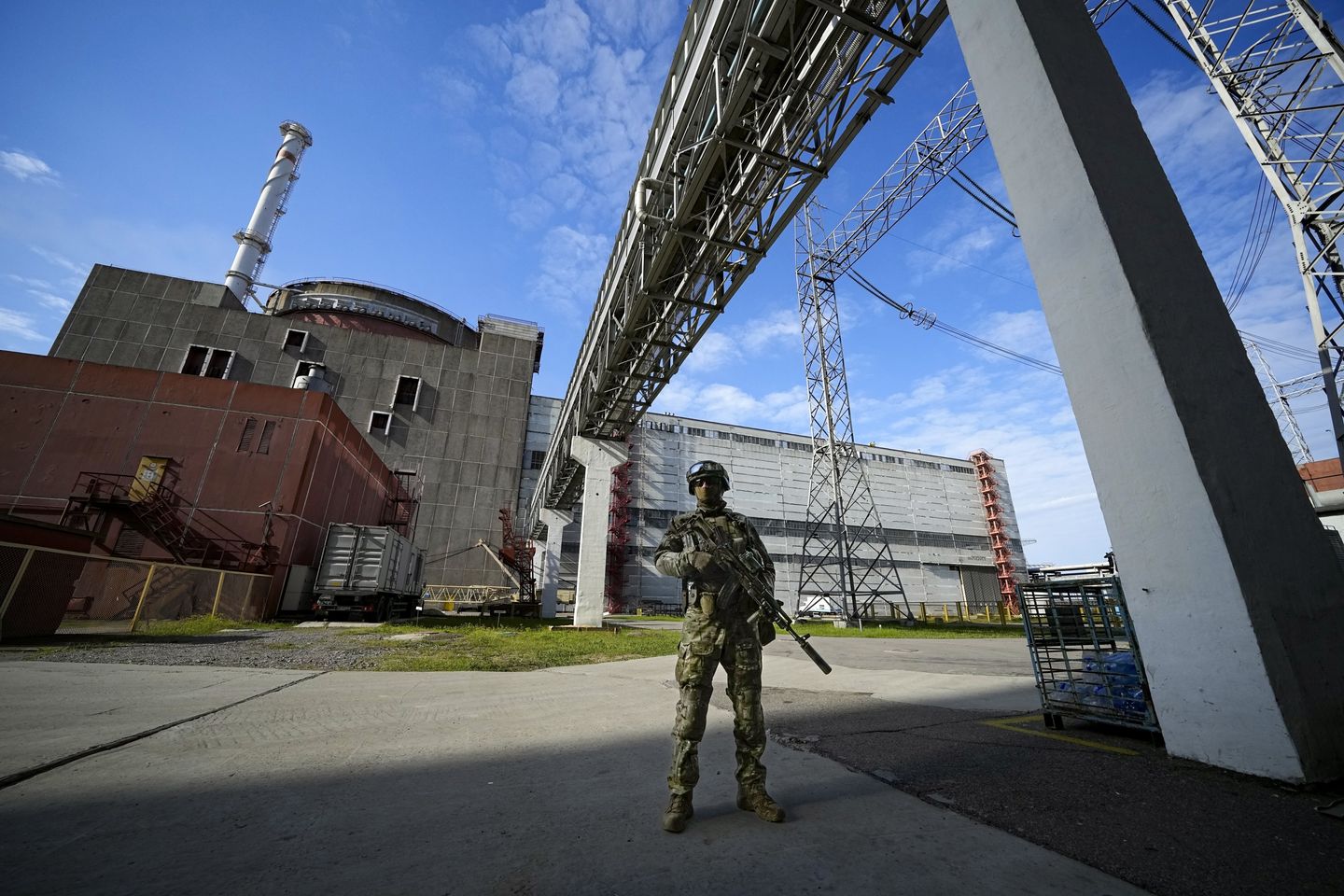

Ukraine’s Zaporizhzhia power plant, the largest nuclear facility in Europe, is under “constant threat,” caught in the crossfire between warring Russian and Ukrainian troops, international inspectors said Tuesday as they called for the immediate creation of a safe zone around the site to prevent potentially massive radiation leaks.
Tuesday’s report from the International Atomic Energy Agency (IAEA) paints a grim picture of the situation on the ground at Zaporizhzhia in southeastern Ukraine, which is under the control of Russian troops but still operated by Ukrainian technicians. Both sides have accused the other of reckless shelling near the facility and IAEA officials said the fighting could lead to a major nuclear catastrophe.
IAEA Director-General Rafael Grossi, who led a team of inspectors that just returned from the embattled facility, is expected to brief the UN Security Council later Tuesday on his team’s findings.
“While the ongoing shelling has not yet triggered a nuclear emergency, it continues to represent a constant threat to nuclear safety and security with potential impact on critical safety functions that may lead to radiological consequences with great safety significance,” the IAEA said in its report. “The IAEA recommends that shelling on site and in its vicinity should be stopped immediately to avoid any further damages to the plant and associated facilities, for the safety of the operating staff and to maintain the physical integrity to support safe and secure operation. This requires agreement by all relevant parties to the establishment of a nuclear safety and security protection zone around” the plant.
As the report was released, new violence near the plant underscored just how dangerous the situation has become.
The mayor of Enerhodar, the city where the plant is located, reported a major explosion in the city on Tuesday. He said the blast left the city’s population of 53,000 cut off from power and water supplies, the Associated Press reported. It’s not clear who is responsible for the explosion.
While the two sides trade blame for violence near the plant, IAEA officials said there’s increasing concern about the Russian military occupation at Zaporizhzhia and the impact on the local staff working there. There are growing fears that the Ukrainian workers manning the plant are overworked and sleep-deprived, raising the risk of deadly human errors.
“Ukrainian staff operating the plant under Russian military occupation are under constant high stress and pressure, especially with the limited staff available. This is not sustainable and could lead to increased human error with implications for nuclear safety,” the IAEA said in its report.
Ukrainian officials argued that Russian troops are underestimating the gravity of the situation on the ground and acting irresponsibly.
“There are Russian troops now who don’t understand what’s happening, [who] don’t assess the risks correctly,” said Ukrainian presidential adviser Mykhailo Podolyak. “There is a number of our workers there, who need some kind of protection, people from the international community standing by their side and telling [the Russian troops]: ‘Don’t touch these people, let them work.’”
Moscow has maintained that Ukraine is to blame for the violence and has regularly shelled the area around the facility as part of its effort to recapture control of the site.
— This article was based in part on wire service reports.
